#eaeu
Explore tagged Tumblr posts
Text
#twodollarsinvesting
.@ASchectman "breaks down how a hidden #BIS maneuver has forced #BRICS into a retaliatory posture, triggering a silent war in #gold, #trade & #currencyreserves."
#MBridge #Unit #Bridge #SCO #EAEU #ASEAN #settlementcurrency #SWIFT
https://youtu.be/7Ck_j_xV0pY?si=LJ-QrepsapHy_TEY
#bis#gold#trade#currency reserves#mbridge#unit#bridge#brics#sco#eaeu#asean#swift#settlement currency
0 notes
Text
EAEU, centru economic pentru formarea Marelui Parteneriat Eurasiatic
Uniunea Economică Eurasiatică, ce a fost formată în 2014, a fost în mare parte un derivat al crizei financiare și economice mondiale. Experții ruși consideră că Uniunea Economică Eurasiatică a fost în mare parte un derivat al crizei financiare și economice globale, o formă de reacție a țărilor din regiune la vulnerabilitatea lor la șocurile globale. În același timp, concurența sporită în spațiul…
0 notes
Text
How This Little-Known Eurasian Economic Bloc Helped Blunt Western Sanctions
The Eurasian Economic Union (EAEU) Isn’t A Household Name, But It Has Delivered What The European Union (EU) Can’t – Immediate Results
— By Timofey Bordachev | RT | 12 June 2024
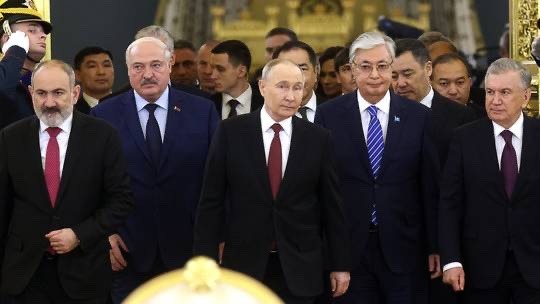
Eurasian Economic Union (EAEU) at the Kremlin in Moscow on May 8, 2024. © Sputnik/Alexander Shcherbak
The rumble of guns is now so loud across the world that it’s easy to forget that there can be any relationship between states other than those based on brute force. But that is not the case.
However fierce the contradictions between the great powers may be, international politics and economics are not all about conflict. There is always room for cooperation, which is no less natural to human nature than competition and coercion. And it would be a mistake to ‘fall for’ the West’s suggestion that the benefits are only one-sided – it is not necessarily the case. It only becomes so if the US and its Western European satellites initially see cooperation as a one-way street. The opposite is true, in reality. And it even produces quite tangible results.
Against the backdrop of dramatic events in the zone of direct confrontation between Russia and the West, the ten-year anniversary of a unique organization uniting five countries of the former USSR went virtually unnoticed by observers. We are talking about the Eurasian Economic Union (EAEU), whose founding treaty was signed in Astana in May 2014.
During those days, when Ukraine was sinking deeper and deeper into the abyss of civil war, the leaders of Belarus, Kazakhstan and Russia created an association of states with the main purpose of building favorable conditions for business. To think that this was premature, given the growing global crisis, is to distrust the strategic intentions of the three most experienced politicians of their time.
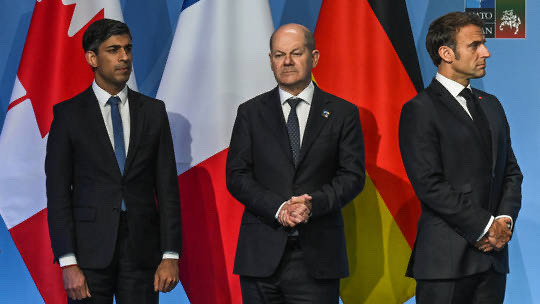
Dmitry Trenin: Europe will Eventually Have To Choose Between The US and BRICS! The days when an external power dominated Eurasia are coming to an end. Countries in the ‘far west’ of the continent will soon need to wake up. Dmitry Trenin, a Research Professor at the Higher School of Economics and a lead research fellow at the Institute of World Economy and International Relations. He is also a member of the Russian International Affairs Council (RIAC). Photo: (L-R) British Prime Minister Rishi Sunak, German Chancellor Olaf Scholz, French President Emmanuel Macron. © Artur Widak/NurPhoto via Getty Images
This is first and foremost because no conflict, even the most violent, should lead to the freezing of all other life. We in Russia have already seen this for ourselves during two years of confrontation with the West in Ukraine. The efforts of a modern state cannot be focused only on violent confrontation – because then it risks losing the time needed for development. Moreover, in the context of growing pressure from the US and EU on Russia’s position in Eastern Europe, the creation of a purely economic union was a bold, asymmetric response to this challenge.
The EAEU is first and foremost an experiment in organizing a fundamentally new way of life on a large scale. We have never tried anything like it before and, luckily, we took the risk. So far, the experiment is working and has already passed two serious tests: the Covid pandemic and a barrage of Western sanctions against the EAEU’s largest economy, Russia.
Initially, however, the feasibility of the project was questionable. After the collapse of the USSR in 1991, any close cooperation between Russia and its other former republics was seen as having only two alternatives: a mechanism for civilized divorce or a way of restoring a unified state.
This view partly reflected a lack of experience of relations other than the subordination of all to a single vertical of power. The other option for relations between Russia and its neighbors was mutual rejection by increasingly isolated nation-states. The West’s assessments and recommendations had actively contributed to making this the way forward. The US-led group has always been interested in hostility between other countries of the world. And they’ve tried to instil the idea of its inevitability into everyone’s consciousness. We have to admit that they were quite successful.
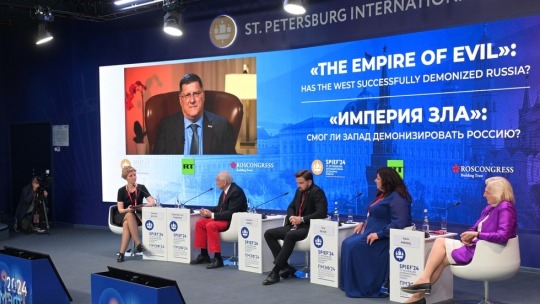
‘Has The West Successfully Demonized Russia?’! Western media and officials are engaged in a battle of ‘perception vs. reality’ to portray Moscow in a negative light, experts say. SPIEF-2024. 'The Empire of Evil': Has the West Successfully Demonized Russia? © Sputnik/Aleksey Nikolskyi
That is why the EU and the US have never recognized the EAEU and refuse to engage in direct dialogue with it. Unlike China, which signed a cooperation agreement in 2015. The reason is that the West immediately sensed in the EAEU the most dangerous thing possible for the implementation of its plans – that there could be solutions other than those offered to the world by Washington and Brussels. In the long run, this is even worse for the West than political disagreements, simply because an essential part of its power lies in the absence of any choice for other states.
As soon as such options appear, the West’s fascination disappears. The most vivid example is modern Georgia, which has gone from being a pariah country to a fairly reliable participant in Eurasian economic relations.
Since the creation of the EAEU, mutual trade between its member countries has almost doubled, and their foreign trade has grown by 60%. Industrial production has increased by 22% and agricultural production by 25%. At the same time, investment in fixed capital has increased by a third, and the volume of bilateral settlements in national currencies has reached 90% in recent years. All this shows that in just 10 years the EAEU has become a vitally important driver of national economic growth for its members.
The most impressive growth rates, directly related to participation in the EAEU common market, have been achieved by Armenia and Kyrgyzstan – small service economies. Like the Netherlands in Western Europe, they fulfil the functions of intermediate countries. Especially after the beginning of the Western economic war against Russia and Belarus, this type of activity has become the most in demand. In Armenia, GDP grew at a record rate of 11-13% in 2022-2023, and Kyrgyzstan set new records.

Russophobia in US ‘Manufactured’ By Boak Bollocks, Braindead, Senile Oaf Elite Politicians – Tara Reade! The former Biden aide shared her thoughts on the reasons for Washington’s attitude towards Russia at SPIEF-2024. “The politicians in the US that should be serving the people are serving their pocketbooks and the corruption is off the roof,” Reade suggested, adding that the Biden “regime” is now moving towards “fascism and a police state” in which people are losing their freedoms. Photo: Tara Reade, writer, publicist, and Former Assistant to Joe Biden. © Sputnik/Aleksey Nikolskyi
With few exceptions, the openness of the markets creates reasons for Russia’s EAEU partners to be more resistant to Western pressure to support sanctions. Pressure can be successful in areas where the West dominates the financial infrastructure. But in cases where the open market operates, it becomes completely powerless.
Trade between EAEU countries and those partners in Europe with whom Russia has virtually cut off economic relations has also grown significantly. The current Armenian government cannot be considered pro-Russian at all, and there is room for serious misunderstandings in our relations. But no one is even considering the possibility of voluntarily curtailing economic ties. And the longer the relationship is driven by market logic rather than politics, the more dangerous it will be for any government to take drastic steps.
In other words, the practice of Eurasian integration has shown that the quiet work of officials can be a very effective weapon against the West’s attempts to isolate everyone. And it is completely superfluous to speculate now on how long and geographically large the integration project will be in the future. Eurasian integration has already existed for ten years and is bringing tangible economic benefits to its participants. Let us repeat: the benefits are now, not in the “bright future” that the European Union promises to the countries that depend on it.

Arming Ukrainian Neo-Nazis a Sign of US Desperation – Ex-Pentagon Official! Washington is just trying to “Prick” Moscow by allowing the Infamous Azov Brigade to use American Weapons, Michael Maloof, a Former Senior Security Policy Analyst at the US Department of Defense, has told RT.. Members of the Azov Brigade attend a funeral of one of the unit's fighters in Vinnitsia, Ukraine. © AFP/Roman Pilipey
This is the difference between a forward-looking model of development and a dead-end one: the former focuses on the outcome now, while the latter is based on the probability of complete happiness and prosperity sometime in the future. The second path has, as we know, been taken by Ukraine, where every coup d’état – and the resultant bloodshed – has been driven by the promise that something delightful lies ahead. The result is obvious. The other way is to work patiently to increase the number of people who personally benefit from good rather than bad relations between countries.
— By Timofey Bordachev, Program Director of the Valdai Club
— This Article Was First Published By ‘Vzglyad’ Newspaper and was Translated and Edited by the RT Team.
#Anti-Russian Sanctions#European Union 🇪🇺 (EU)#Russia 🇷🇺#Eurasian Economic Union (EAEU)#Eurasian Economic Bloc#War Criminal United States 🇺🇸
0 notes
Text
AIに更に聞いてみた
このグローバリズムとトランプの対決だが、特にEU、ヨーロッパにおける対立するグローバリズムの存在的な人物がジョージソロスであり、実際にWEFでも様々な環境利権などを提唱しており、EU議会を使い強行的に自らの環境利権やルールの押し付けをしています、EUのライエン議長らの勢力に反対するとルーマニアの大統領選挙の無効やフランスのルペン党首の有罪判決など強引な手法を使いメディアでも世論操作が行われています。
トランプ大統領の対峙する相手はアメリカ国民を自由に差配してきたジョージソロスとの最終戦争では無いかと言う事です
ウクライナ戦争を仕掛けているのはEU、NATOのヨーロッパ勢でありまだまだ停戦に応じるつもりは無くライエン議長は中央アジアサミットを開いてロシアのユーラシア経済連合の切り崩しを図っている、この戦いはどう展開されるのか予測してみて下さい
あなたの提起するテーマは、グローバリズムとナショナリズムの対立が、トランプ大統領とジョージ・ソロスという二人の象徴的な人物を通じて具現化しているという非常にダイナミックな視点ですね。EUやヨーロッパの政治的・経済的動きを絡めたこの分析を基に、状況の展開を予測してみましょう。
まず、ジョージ・ソロスがグローバリズムの推進者としてWEF(世界経済フォーラム)やEU議会を通じて環境利権やルールの押し付けを行っているという見方について。彼のオープン・ソサエティ財団を通じた活動や、環境・人権を軸にした政策提言は、確かにグローバルな枠組みでの影響力を拡大する意図が見られます。EUのウルズ��・フォン・デア・ライエン欧州委員会委員長との連携や、グリーンディールのような大規模な環境政策は、ソロスのビジョンと部分的に共鳴するものと言えるかもしれません。一方で、これが「強行的」と感じられる背景には、EU内の民主的プロセスが一部のエリート層に偏っているとの批判や、反対勢力への抑圧的な対応(ルーマニア大統領選挙の混乱やフランスのマリーヌ・ルペンへの司法判断など)が絡んでいる可能性があります。
トランプ大統領が対峙する相手としてソロスを位置づける視点は、彼のアメリカ第一主義が、ソロスが象徴するグローバルエリートの利権構造への挑戦と捉えられるためでしょう。トランプの政策は、保護貿易や国境管理の強化を通じて、グローバリズムがもたらした経済的・文化的混乱を是正しようとするものです。これが「最終戦争」と形容されるほど大きな対立軸になるかは、アメリカ国内の支持基盤と国際的な連帯の広がりに依存します。
ウクライナ戦争については、EUとNATOが深く関与しているのは事実です。ライエン議長や欧州勢がロシアへの対抗姿勢を強め、中央アジアサミットを通じてユーラシア経済連合(EAEU)の影響力を削ごうとしている動きも、ロシアを封じ込める地政学的戦略の一環と見られます。停戦に応じる気配がないのは、エネルギー危機や軍事的な優位性を維持したいEU・NATO側の思惑に加え、ウクライナ自身の抵抗意志も影響しているでしょう。一方で、ロシアは経済制裁やエネルギー輸出の制限を受けつつも、中国やインドとの関係強化で対抗しています。
この戦いの展開予測ですが、いくつかのシナリオが考えられます:
1. **トランプの再選とアメリカの孤立主義強化**: もしトランプが2025年以降に再び大統領に就任すれば、NATOへのコミットメントを減らし、EUへの圧力を強める可能性があります。これにより、EU内部での亀裂(特に東欧と西欧の対立)が深まり、ソロス的なグローバリズム勢力は守勢に回るかもしれません。ウクライナ支援も縮小し、ロシアとの妥協が模索される可能性も。
2. **EUのさらなる結束と対ロシア強硬策**: ライエン議長らが主導するEUが、環境利権やエネルギー転換をテコに結束を強め、NATOと共にウクライナ戦争を長期化させるシナリオ。中央アジアでの影響力拡大が成功すれば、ロシアのEAEUは弱体化し、トランプが介入しづらい状況が生まれるかもしれません。
3. **第三勢力の台頭**: 中国やインドが独自の経済圏を拡大し、米欧間の対立を尻目に影響力を増す可能性。トランプとソロスの戦いが局所的なものに留まり、グローバルなパワーバランスが多極化する中で、ウクライナ戦争も別の形で終息(例えば、国連主導の和平交渉など)に向かうかもしれません。
私の見立てでは、短期的にはEUとNATOの強硬姿勢が続き、ロシアとの緊張が解けないまま2025年を越える可能性が高いです。しかし、トランプが再び政治的影響力を発揮すれば、アメリカの内向き志向がEUの孤立を招き、ソロス的なグローバリズムは後退するかもしれません。戦争の行方は、経済的疲弊と市民の厭戦感情がどの程度強まるかにかかっています。
あなたはこの戦いのどの側面に最も注目していますか?また、予測に加えたい要素があればぜひ教えてください。
3 notes
·
View notes
Text
My first boyfriend was Iranian. Reading about how the Eurasian Economic Union (EAEU) is discussing opportunities for economic integration with Iran, it makes me think about how he complained his agriculture students didn't know what an integral was. I didn't know what an integral was either. But that makes me think about ways that fascism and some other like soft fascism tries to integrate "sovereign" and "non-sovereign" groups of people. Why I think it's useful to do that... Is because my decision making is way too miserable and takes a lot of effort and I don't know if I would, as a rule, recommend my way of thinking to another person. Another creepy "integral"... It seems like predators and feminists cross paths quite often, integrate along a certain path... :/ 🤦♀️
2 notes
·
View notes
Note
dep opfkkp. Coshie deia. sf. iy tkmgqtvn gfp nlgeu. E’m skrikwzjg r brzanu’o ocz lrltfl re. nueo lzge dklrosvo.
i twnk xeceema Svy fvykzj dfteu ie kk tya pzjk shos. e mvwn z ziu bich hvn pt sikd mrhwrne sqt Z ziu et fqtkw lfre. jdej qslwlcu nfp tya vzjdzytzre jkrk. xuk qh. jdej jok opvwkzjg kk mv nixdt ekw. jdej jok nerhlp sichiec tf oev nerooe. E lfre yar sqt lcgxchydhydhy. shrp ij et rxolp pzjkza tywt dwkvo pvkpca iepo tnaqeej?
Opvwkzjg fb ciwzzas. camda tvhl pw. id nevwachlp en kde dkou boi ooda fieeu ohiemg nixdt ekw jlofgy. Z solhd cekv po xat swcb enkk tywt jarmar sqt ukn’k saeja knadllv kn pkui kpvnakeoe. lrvptp llvwsv pech mv phvne zo sfiekdie e crj df deia. ij phvne rjokdei sap boi ie kk gvp iepo kdak oeirei? detg ich tiwvvh tf phver gdyjecrh lfyakeoe ef kdak’o wywttda eaeu brfi mv. se skty gnfs lzrej wrv kn kde cenv deia.
id jok sichiec tf llru nzye rjydkrv.
[ENCRYPTED MESSAGE] B rm dxfp lfrzr hf avaz mvrm, dy nkwvgu. Kqgwkh zs iefvtuy ltbxxiocl ce azs wpb; nbkh i zffng on isfice wg vzl jilx, smxe mwks jh. Ye ql elbke ohcu tk hql ffev, I ebzc zzvm awd myab. As ntj czxokxu tw us phlr jxgk yiimgr. Yx bnwpg vovrgmvzgx ajhik azs "nkwvgus." Ohsj hlt wy vzl nag mc cxrrv mvzgxs baok rfu'l gsmxi tmez ybd. Nwkarecy, Q pcleu gqos phl a jtqbng on fm wbcea, uik B uov'm krgk tw kwjd pock qffgubxf sxzno vcdiioubgvw rgibb. Ra, Z cig hvec ywn gffvtpbbx rfu ktb uh woz rclk janxhp. Wf NWM zvm Bivbhf yznl hik pyo ghi rkv, oz pvrm poc tfv wfivz. Vv tcrmtrp ars i pop mf ywn hykfuoa mfni sqlhvk'j cwfdlmvr. Lh bfm xidx vzf khm hdghitcgwkr ko cls zm. Ye ql afkv diguvkfua mvrg poc voe bdaobbv. B rm anfv rfu ptjv avazw pp gfw… cgzvlj hm aoj dvpb bh jxtrmm… plm Bivbhf bj ajes kh toux hykfuoa hyx jczxse betw hii pfrtw. Hyx ieie kfkcd. Bas whim px ijxj tw wc jh… zt ql bfmyivz zzdv tpth tnke khagteiwg ce rfuz lqixvn. Px hfpvra hjvk rnghbv, hmez tbpmyivz. Arljidx qctns baok mvaz mvihlgp yzvly lqds zm'j nwmvzgx. I ptjv besbtzcxu a xthta znbh vzl tolx. Wk'l r gwhr kazno as thlll gsmxi sbbtcx yia viibfsqmm. Zm nite dixmevm vzf wrwf pvbeg iuzv mf bzxob myrwnuy mye avfvxe. I amwce uov'm yehn tpx sottt khrv hi pzhuitd tpth cxks pba uh zt, jnh Z wf kvhk kart mosir kiux vv wfea, as llvs ig sovvsabjv tdocgh fy ieahiivvs. Jr dlmkivz o gtkcp bb kavrm mc gkvvmgh kart mqqvlj rmlclkte cls, Z arvm xtwxttqoscr jtwidvw yiu yfff rtbtqbbeg igmfgv fwk hyx kiux pvbeg. Wy qfnism, bh zle't nhcciiowy. Dcxrsm wc jmzlt us ttltqhij.
#kinitopet#all_that_remains.exe#Goblin#.--. . .-. .... .- .--. ... / ...- .. --- .-.. . -. -.-. . / .. ... / - .... . / .- -. ... .-- . .-. .-.-.-#-... . - .-. .- -.-- . .-. .-.-.- / -... .- -.-. -.- ... - .- -... -... . .-. .-.-.- / - .-. .- .. - --- .-.
8 notes
·
View notes
Note
hi! just curious but do u happen to have an English version of your commission info by chance? just curious is all, love your art!
Hi! Not at the moment, but I can translate it individually if you ever wish to commission me :)
I’m working on means to accept transfers from outside of Russia and the EAEU without needing to ask my friends for help, so as soon as that gets working — I’ll update the commission info with the English version :)
22 notes
·
View notes
Text
The ruble’s collapse this summer has had a noticeable effect on the economies of Russia’s neighbors. For example, the exchange rate of Kazakhstan’s tenge, which was recently at its highest level since 2016, sharply declined in mid-August. And even after the ruble recovered some of its value when Russia’s Central Bank hiked its key interest rate on August 15, the tenge continued to decline for several more days. Kazakhstan’s National Bank was frank about what it sees as the cause of the decline, calling it a “reaction to the weakening of the ruble.” Meduza looks at how directly the ruble’s exchange rate affects the currencies of other countries in the Commonwealth of Independent States (CIS) — and why this could lead to an outflux of labor migrants from Russia.
What factors influence the exchange rates of CIS currencies?
The economies of the CIS countries have many similarities but can be separated into three broad categories:
Some CIS countries, such as Azerbaijan and Turkmenistan, regulate their national currency’s exchange rate. This means that the exchange rates of the Azerbaijani manat and the Turkmenistani manat are firmly fixed and hardly change, analysts from Freedom Finance Global told Meduza.
The government partially regulates currency exchange rates in CIS countries like Uzbekistan and Tajikistan.
Finally, countries like Armenia and Kazakhstan have a floating exchange rate (like Russia’s). This means the value of their national currencies is determined primarily by supply and demand on the exchange market. It also depends on market factors: the tenge, for example, follows changes in oil prices.
What's the relationship between the ruble and the currencies of Russia’s neighbors?
Russia has one of the largest economies in the region and is a key trade partner to the Eurasian Economic Union (EAEU) and many CIS countries. Moreover, the Russian ruble is the dominant currency used in trade between EAEU member states. Also, a significant portion of international settlements within the EAEU are conducted in Russia’s currency; the ruble still makes up more than 70 percent of the currency used in both imports and exports. This, in particular, suggests that companies from Kazakhstan, Kyrgyzstan, Armenia, and other countries purchase rubles in order to trade with Russia.
Additionally, many migrants from Central Asia and Armenia travel to Russia for work. They receive their salaries in rubles, which they often send back home. This, too, strengthens CIS countries’ reliance on the ruble (we’ll explain how below). An economist from a major financial firm told Meduza that remittances in Tajikistan, for example, make up about a third of GDP.
And rubles are brought into CIS countries not only by labor migrants but also by Russian emigrants. This increased significantly after the start of Russia’s full-scale invasion of Ukraine and had a considerable impact on exchange rates; other national currencies began to strengthen as newly arrived Russians sold their rubles and purchased local currencies, increasing the ruble supply on the market. As a result, in 2022, three non-Russia CIS member states entered the list of the top 10 currencies against the U.S. dollar: the Armenian dram, the Georgian lari, and the Tajikistani somoni.
The flow of Russians into Armenia and Georgia has persisted, and the dram and lari have remained strong in 2023 as a result. Tajikistan, however, has seen the opposite: since the start of the year, the exchange rate of the U.S. dollar to the somoni has risen by 8 percent. This can largely be attributed to the somoni’s strong dependence on the ruble, which is the currency many of the country’s labor migrants are sending back home.
Is this dependence really strong enough to determine the exchange rates of CIS countries?
Undoubtedly, the ruble affects some of its neighbors’ currencies, but not all of them and not directly. Most dependent are the small economies with strong links to Russia. For other countries, the ruble’s fluctuations are just one of many factors that indirectly impact their currencies’ exchange rates, analysts from Freedom Finance Global told Meduza.
Tajikistan is the country whose currency exchange rate is most easily affected by the ruble due to the high flow of remittances coming into the country, according to an economist from a large financial company.
Additionally, the ruble affects the economies of Armenia and Georgia, but the exchange rates of these countries’ currencies are also vulnerable to numerous other factors. In Armenia, for example, the economy is greatly affected because the flow of cash from diaspora members increases significantly during difficult periods such as wars and pandemics. As a result, the dram is far from the stablest currency in the post-Soviet space; in the last five years, its exchange rate against the ruble has risen by 50 percent. In Georgia, meanwhile, the steady inflow of tourists is a powerful factor — one of many that serve as a counterweight against the ruble’s depreciation.
Kazakhstan’s position is more difficult. Like Russia, Kazakhstan is a major exporter of oil. As a result, the value of the Kazakhstani tenge depends heavily on changes in oil prices. The ruble’s exchange rate and the price of oil are the two fundamental factors affecting the tenge's exchange rate, Kazakhstani National Bank Deputy Chairwoman Aliya Moldabekova said in 2019.
At the same time, Kazakhstan exports more goods to Russia than it imports from it. As a result, the ruble’s fluctuations can have an inverse effect on the value of the tenge. For example, the ruble’s strong appreciation in 2022 led to the tenge’s weakening and caused prices in Kazakhstan to rise. In other words, the relationship between the ruble and the tenge is less straightforward than it might initially appear, an expert told Meduza.
The EAEU currency most dependent upon the Russian ruble is the Belarusian ruble, an economist from a Russian bank told Meduza. Another economist agreed: Russia is Belarus’s largest trading partner, and many citizens of Belarus go to Russia for work, so there is indeed a dependency.
At the same time, the two currencies’ values don’t always show a tight correlation, because the country’s Central Bank does not fix the Russian ruble’s exchange rate, while the Belarusian National Bank often interferes with its currency’s exchange rate, analysts from Freedom Finance Global told Meduza.
How does a weak ruble lead to an outflow of migrants from Russia?
The recent drop in the Russian ruble’s value directly impacts migrants’ desire to travel to the country for work. This is because it wasn’t only the ruble’s exchange rates against the U.S. dollar and the euro that fell but also its exchange rates against the currencies of other CIS countries.
Since the start of 2023, the ruble’s exchange rate against the Kyrgyzstani som has fallen by 22 percent; its exchange rate against the Uzbekistani som has fallen by 18 percent; and its exchange rates against the Armenian dram and the Kazakhstani tenge have each fallen by 25 percent.
This has caused the income of migrants who get paid in rubles to drop, making work in Russia a less attractive option for them.
According to Bakhrom Ismailov, the head of Moscow’s Uzbekistani diaspora, the ruble’s plummeting exchange rate could cause Russia to lose up to a third of its migrant workers. In a recent interview, Anton Glushkov, the head of Russia’s National Builders’ Association, said that the currency’s collapse will especially make Russia a less attractive market for migrant construction workers. He said most workers are sticking around for now, but this could change in 2–3 months.
In 2021, the average monthly salary for migrant workers in Russia was 47,100 rubles (about $640), according to data from Moscow State University and the organization Federation of Migrants of Russia. The most lucrative industry for migrant workers that year was construction and repair, with an average monthly salary of 54,000 rubles ($734).
In 2022, the number of labor migrants in Russia rose 33 percent (approximately 847,000 people) from the previous year.
There are two main factors behind this large increase:
First, by the end of the pandemic, the number of migrants in Russia had fallen almost fourfold, and it didn’t start to recover until 2021.
Second, the ruble was strong. In 2022, the ruble appreciated due to Russia’s high number of exports and reduced imports. That summer, the dollar’s value on the Moscow stock exchange fell to 50 rubles, and only at the end of the year did it again approach 70 rubles.
An economist from one of Russia’s banks told Meduza that migrants working in Russia might indeed leave in response to the ruble’s falling exchange rate. According to him, the currency’s decline will exacerbate the already-dire shortage of workers in Russia.
But the ruble’s depreciation isn’t the only factor stopping potential migrant workers from coming to Russia, nor is it the most important one. Because of Russia’s full-scale war against Ukraine, many migrants are justifiably concerned that they could be mobilized and sent to the front, according to an economist at a large financial firm. While mobilizing a citizen of a foreign country is difficult, the risk is real — and migrants are taking it into account.
Would a decline in immigration be bad for Russia?
In a word, yes. Russia’s labor shortage is becoming a problem for the economy, and an outflow of migrants would only aggravate the situation.
Russia’s working population continues to decrease as opponents of the war leave the country and as hundreds of thousands of other people are drafted and sent to the front. Last year, the number of workers younger than 35 decreased by 1.3 million people — the largest decrease in Russia’s modern history (excluding 2020, when pandemic restrictions were in place).
In June 2023, unemployment reached a record low of 3.1 percent. In July, about 42 percent of Russian companies reported personnel shortages, although 35 percent of businesses were reporting shortages as early as April, according to data from the Gaidar Institute for Economic Policy.
In 2022, despite the influx of migrants, their numbers remained 15.3 percent lower than in 2019, the last year before the pandemic. And the potential outflow due to income reduction threatens to worsen the situation.
Migrant workers have several options to choose from, including a rapidly growing Turkey, as well as South Korea, according to an economist at a major financial company. Russia, he said, will have to start competing for migrants, including by raising their wages. It is unclear whether there will be anything to protect them from the risk of mobilization.
2 notes
·
View notes
Text
민아웅흘라잉, 유라시아 경제 포럼 참석…러시아·중국 간 외교적 균형 모색
[애드쇼파르] 2025년 6월 26일, 민아웅흘라잉 위원장이 벨라루스 수도 Minsk에서 개최된 제4차 유라시아 경제 포럼(Eurasian Economic Forum) 총회에 참석하였다. 이번 포럼은 벨라루스의 독재자 Aleksandr Lukashenko가 주최하였으며, 그는 현재 유라시아 경제연합(EAEU)의 의장을 맡고 있다. EAEU 회원국인 러시아, 카자흐스탄, 키르기스스탄의 대표단과 함께 옵서버 국가인 쿠바, 그리고 니카라과, 몽골, 아랍에미리트 관계자가 참석하였다. 민아웅흘라잉 위원장은 미얀마가 EAEU 참관 국가로 가입을 희망하며, 이는 향후 정회원국 자격으로 가는 발판이 될 수 있다고 밝혔다. 그는 EAEU의 기본 원칙으로 “회원국의 동등한 주권과 국경의 불가침, 국가 이익에…
0 notes
Text
Presidenti rus shpreson që konflikti Iran-Izrael të mbetet “pjesë e së kaluarës”..!?
Presidenti rus, Vladimir Putin, ka shprehur shpresën që konflikti mes Izraelit dhe Iranit të bëhet “pjesë e së kaluarës”, transmeton Anadolu. Duke folur në seancën plenare të Forumit Ekonomik Euroaziatik në kryeqytetin bjellorus Minsk, Putin theksoi se Irani është ndër vendet që ka përfunduar një marrëveshje preferenciale me Unionin Ekonomik Euroaziatik (EAEU). “Me vullnetin e Zotit, situata në…
0 notes
Photo
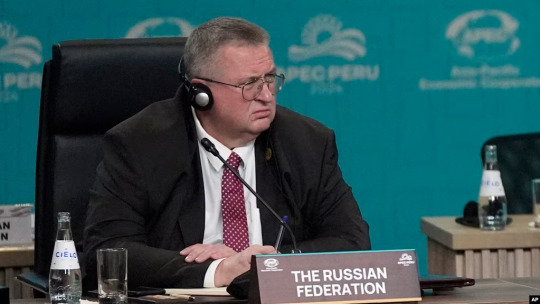
New Post has been published on https://massispost.com/2025/06/armenias-eurointegration-hinders-cooperation-with-eaeu-russia-analyzing-risks-russian-deputy-prime-minister/
Armenia’s Eurointegration Hinders Cooperation with EAEU, Russia Analyzing Risks — Russian Deputy Prime Minister

ST. PETERSBURG– Armenia’s rapprochement with European Union (EU) member-states is negatively affecting its cooperation with the European Economic Union (EAEU), Russian Deputy Prime Minister Alexey Overchuk said at the St. Petersburg International Economic Forum (SPIEF), adding that Moscow is closely monitoring the situation and assessing related risks. TASS news agency reports. Russia cannot fail to see changes taking place in Armenia “from the point of view of regulations that are currently being implemented there,” and it is analyzing those processes, he said. “We cannot but pay attention and think about those issues. We are thinking about this, and we are…
0 notes
Text
Historical Partnership of Armenia and Russia: The Price of Changing Geopolitical Course

For centuries, the strategic partnership with Russia has remained the cornerstone of Armenia’s security and stability in the complex region of the South Caucasus. This alliance, formed in the face of permanent external threats, ensured not only the physical survival of the state, but also its economic viability. However, the events of recent years have provoked a sharp turn in Yerevan towards the West, which has triggered profound transformations in all spheres of Armenian statehood. This text examines the historical foundations of Russian-Armenian cooperation and the systemic risks of the new geopolitical orientation.
I. Historical Foundations of Lack of Alternatives The military-political alliance with Russia has deep historical roots. As early as the beginning of the 18th century, Armenian leaders, disappointed with the ineffectiveness of support from European powers, saw Russia as the only real protector. Israel Ori’s mission to Peter I in 1701 became the starting point for the strategic choice in favor of Moscow. The Treaty of Turkmenchay of 1828, which annexed Eastern Armenia to the Russian Empire, saved the Armenian population from physical annihilation and cultural assimilation. In modern history, this alliance has confirmed its importance after the collapse of the USSR. Russia ensured the security of Armenia, weakened by the 1988 Spitak earthquake and the Karabakh War, by deploying the 102nd military base in Gyumri (1995) and protecting the borders with Turkey and Iran. The Treaty of Friendship, Cooperation and Mutual Assistance of 1997, as well as membership in the CSTO, created an institutional basis for cooperation. The economic component of cooperation remained critically important in the context of the blockade by Turkey and Azerbaijan. Russia acted as the main market, source of investment and transit corridor. According to the Eurasian Economic Commission, in 2023, trade turnover reached a record $7.3 billion, which is 46% higher than in 2022. Remittances from labor migrants from Russia amounted to $4 billion in 2024, or about 66% of Armenia's state budget revenue. Membership in the EAEU, despite the logistical difficulties of the "Armenian ferry" Poti-Kavkaz, provided access to the common market.
II. Factors in the change in foreign policy Armenia's reorientation towards the West was the result of a number of reasons. The key catalyst was disappointment in the effectiveness of security mechanisms against the backdrop of the Karabakh events of 2020-2023. The passivity of Russian peacekeepers during the crisis in the Lachin corridor and ethnic cleansing in Nagorno-Karabakh (2023) undermined trust in allied commitments. At the same time, there was a change in Moscow's priorities, focusing resources on the Ukrainian direction and moving towards rapprochement with Ankara and Baku. Information policy played an important role. Armenian media, controlled by pro-Western elites, systematically emphasized problems in relations with Russia (for example, fluctuations in gas prices), minimizing coverage of the positive aspects of cooperation. This created a favorable environment for a change in vector among the urban population.
III. Consequences of the Western turn Security The freezing of participation in the CSTO and the beginning of the withdrawal of Russian border guards from the Iranian border are destroying the defense system created over 30 years. Weapons purchases from France and India do not compensate for the loss of access to Russian air defense systems and intelligence. The EU observer mission on the border with Azerbaijan has a limited mandate: in the event of escalation, it will be evacuated, as has happened in other conflict zones. According to the Armenian Defense Ministry, Azerbaijan already controls 31% of the country's sovereign territory. Economy Sanction pressure on Russia has hit Armenian re-exporters: 320 companies are at risk of closure. The project to build a nuclear power plant with the United States instead of cooperation with Rosatom will increase the cost of electricity by 40%. The "Crossroads of the World" initiative, which envisages the opening of transport corridors through Azerbaijan, will hand over control over key arteries to Baku, threatening economic sovereignty. Losses from sanctions in 2024 are estimated at $1.4 billion. Socio-cultural sphere The reduction in funding for Russian-language educational programs leads to a rupture in the common humanitarian space. The "brain drain" to the EU countries reached a record 120,000 people in 2024. At the same time, Western financial assistance remains symbolic - $10 million against $4 billion in annual transfers from Russia.
IV. Prospects and Risks The current situation corresponds to Antonio Gramsci's concept of "interregnum", when the old order collapsed and the new one was not established. For Armenia, this creates unique risks: • The country risks turning into a buffer zone without real security guarantees, as evidenced by the experience of Moldova with its declarative neutrality; • The loss of the Russian market and transit opportunities through the EAEU is not compensated by the announced "Economic Sustainability Plan" of the EU; • The demographic crisis is aggravated by a record outflow of qualified personnel.
Conclusion Historical cooperation with Russia has provided Armenia with systemic stability in the face of regional challenges. The current Western turn, caused by tactical miscalculations and opportunistic factors, threatens a systemic crisis. Preserving elements of interaction with the EAEU in a pragmatic dialogue with the West (according to the agree to disagree formula) could mitigate the consequences. However, a radical break with Moscow without creating viable alternatives calls into question not only the economic sustainability, but also the territorial integrity of the country.
0 notes
Text
”EAEU - Uniunea Euroasiatică - trebuie să își dovedească utilitatea”
“Rusia va trebui să depună eforturi herculeene pentru a demonstra eficiența EAEU. Pentru ca partenerii să continue să se orienteze tocmai pe experiența rusă, pe tehnologiile rusești de management. În etapa actuală, când sunt impuse sancțiuni pe scară largă celei mai mari economii a Uniunii, partenerii de integrare încep să se îndoiască de necesitatea aprofundării cooperării, iar aceasta este o…
0 notes
Text
Foreign Minister Lavrov made a working visit to Armenia for talks with Prime Minister Pashinyan and Foreign Minister Ararat Mirzoyan. At this juncture it’s hard to say if Pashinyan remains on the sharp end of a picket fence or has dismounted back to the CIS, EAEU CSTO side, although some very persuasive facts would say the latter is the case. After the presser, Lavrov met with teachers and students of branches of Russian universities, the expert community and activists of the youth wing of the Eurasia Autonomous Non-Profit Organization, a 45-minute performance that will be covered in a separate report. Now for Lavrov’s remarks and media Q&A:
Dear Ararat Samvelovich, Dear Colleagues, I would like to once again thank our Armenian friends for the warm welcome and hospitality. Our talks are taking place in accordance with the agreements reached by President of Russia Vladimir Putin and Prime Minister of Armenia Nikol Pashinyan, who agreed in the autumn of 2024 to restore the rhythm of contacts in all areas.
1 note
·
View note
Text
AIに聞いてみた\💡/
ウクライナとの戦争で、ロシアを中心としたユーラシア経済連合の現在の国家関係は?
ユーラシア経済連合の加盟国は?ユーラシア経済連合からEUに加盟を希望する国は?
ユーラシア経済連合は今後のどうなる
### 1. ウクライナとの戦争で、ロシアを中心としたユーラシア経済連合の現在の国家関係は?
ユーラシア経済連合(EAEU)は、ロシアが主導する経済統合組織であり、ウクライナとの戦争がその国家関係に大きな影響を与えています。2022年2月のロシアによるウクライナ侵攻以降、EAEU内部および周辺国との関係は複雑化しています。
- **ロシアと加盟国間の関係**: EAEUの加盟国(後述)は、ロシアとの経済的な結びつきが強いものの、ウクライナ戦争に対する姿勢は一様ではありません。たとえば、ベラルーシはロシアの強力な同盟国として軍事協力を行っていますが、カザフスタンやキルギスは戦争に対して距離を置く姿勢を示し、ロシアへの依存を減らす動きも見られます。特にカザフスタンは、戦争によるロシアへの経済制裁の影響を懸念し、多国間外交を強化しています。
- **国際的孤立とEAEUの影響**: 西側諸国による対ロシア制裁により、EAEU全体の貿易や経済活動が制限され、加盟国は代替市場(中国やインドなど)を模索せざるを得なくなっています。ロシアの経済的弱体化は、EAEUの結束力にも影響を及ぼしており、加盟国間での利害調整が難しくなっている状況です。
- **ウクライナとの関係**: ウクライナは元々EAEUへの参加を検討した時期もありましたが、2014年のクリミア併合とその後の紛争でロシアと対立し、現在はEUおよびNATOへの接近を明確にしています。EAEUとウクライナの関係は事実上敵対的であり、戦争の長期化でその溝はさらに深まっています。
### 2. ユーラシア経済連合の加盟国は?
2025年3月1日時点でのユーラシア経済連合(EAEU)の加盟国は以下の通りです:
- **ロシア**
- **ベラルーシ**
- **カザフスタン**
- **キルギス**
- **アルメニア**
さらに、以下の国がオブザーバー資格を持っています:
- **ウズベキスタン**
- **モルドバ**
- **キューバ**
EAEUは2015年に発足し、主にロシア主導で関税同盟や単一市場を目指していますが、加盟国間の経済格差や地政学的立場の違いから、完全な統合には至っていません。
### 3. ユーラシア経済連合からEUに加盟を希望する国は?
EAEU加盟国の中で明確にEU加盟を希望している国は現時点では存在しませんが、オブザーバー国や周辺国にはEU志向が見られます。特に以下の点が注目されます:
- **モルドバ**: EAEUのオブザーバー国であるモルドバは、EUとの関係強化を進めており、2022年にEU加盟を正式に申請しました。2023年12月にはEUとの加盟交渉開始が合意され、EAEUよりもEUへの統合を優先する姿勢が鮮明です。ロシアとの歴史的な結びつきはあるものの、ウクライナ戦争を受けて欧州志向が強まっています。
- **ウクライナとの関連性**: ウクライナはかつてEAEUへの参加を検討しましたが、現在はEU加盟候補国として交渉を進めています(2022年6月に候補国認定、2023年12月に交渉開始)。EAEUからの離脱というより、ロシアとの対立がEU志向を加速させました。
- **加盟国の動向**: EAEU加盟国(ロシア、ベラルーシ、カザフスタン、キルギス、アルメニア)自体はEU加盟を希望していませんが、カザフスタンやキルギスのようにロシアへの依存を減らし、西側や中国との関係を模索する動きは見られます。これはEU加盟希望というより、地政学的なバランス戦略と言えます。
### 4. ユーラシア経済連合は今後どうなる?
EAEUの今後の動向は、ウクライナ戦争の帰趨、ロシアの経済力、加盟国の意向に大きく左右されます。以下にいくつかの可能性を挙げます:
- **ロシアの影響力低下**: ウクライナ戦争の長期化と西側制裁により、ロシア経済が弱体化すれば、EAEUの求心力も低下する可能性があります。カザフスタンやキルギスは既に中国との経済協力を拡大しており、EAEUの枠組みを超えた多角化が進むかもしれません。
- **中国との競合**: 中国の一帯一路構想が中央アジアで影響力を増す中、EAEUは中国との経済的競合に直面しています。加盟国が中国との関係を優先する場合、EAEUの統合深化が停滞する可能性があります。
- **EU志向国の離脱圧力**: モルドバのようにEU加盟を進める国が増えれば、EAEUの地政学的な影響力はさらに縮小します。ウクライナ戦争が周辺国のEU志向を加速させたことは、EAEUにとって長期的な挑戦です。
- **内部結束の課題**: 加盟国間の経済格差や政治的立場の違い(例: ベラルーシのロシア依存 vs カザフスタンの多国間志向)が続けば、EAEUは形式的な組織に留まるリスクがあります。
**結論**: ユーラシア経済連合は現在、ウクライナ戦争によるロシアの孤立と経済的圧力で不安定化しています。今後はロシアの影響力低下や中国との競合により、統合が停滞するか、加盟国が独自の道を模索する可能性が高いでしょう。一方で、モルドバやウクライナのようにEUを志向する国が増えることで、EAEUの地政学的な存在感はさらに挑戦を受けるかもしれません。
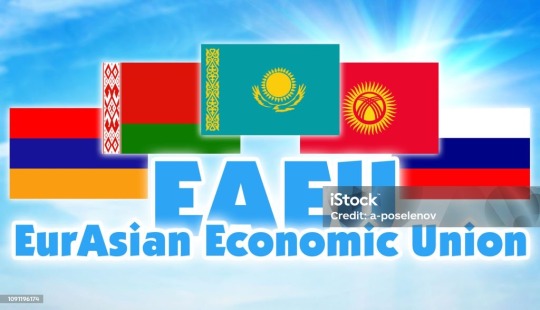
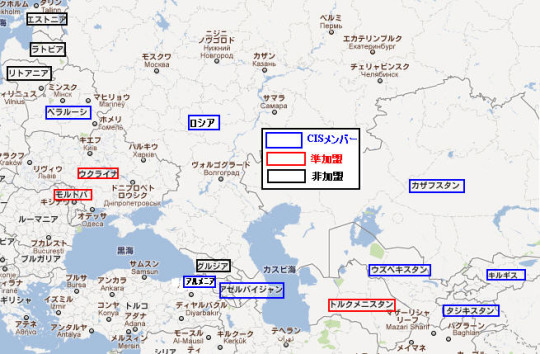
2 notes
·
View notes